“Loud Music” Murder Trial Day 2: The Durango Survivors Testify
Strolla fails to gain narrative traction, makes several awkward missteps

The court moved through nine witnesses today, as they proceeded with the State’s presentation of its case in the “loud music” first degree murder trial of Michael Dunn, for the shooting death of 17-year-old Jordan Davis.
These witnesses consisted of several first-responders to the scene, the three young-men who were with Davis in the Durango SUV when Dunn opened fire, and two witnesses who observed the SUV for the brief period it had pulled away from the gas station.
The first four witnesses were all first responders — three police officers and a Fire & Rescue paramedic — who arrived at the scene after the shooting had taken place. In order they were:
Robert Holmes, Patrol Officer, Jacksonville Sheriff’s Office
Assistant State Attorney handled the direct examination of Holmes.
Holmes is a 7-year veteran of the police department, with prior Navy service. Perhaps the most remarkable part of his testimony to me was how little first aid training he’d received either as a policeman or seamen. Basically, his training was limited to CPR (last taught to him 7 years prior at the police academy) and how to use a tourniquet. Period.
Holmes described receiving the call of shots fired, arriving at the scene to see Jordan Davis cradled in the arms of his friends. Davis had no pulse. There was no pool of blood (of course, given the deep internal nature of the wound and the fact that Davis’ blood pressure would have been zero at that point, there wouldn’t be much blood). When Andrew Williams performed CPR compressions, however, Holmes observed blood coming from Davis’ back. He described Davis’ friends as shocked, as he drove them collectively back to the police station to meet with detectives.
On cross, Strolla asked why Holmes hadn’t performed first aid himself, rather than let a “civilian” do it. It was here Holmes explained the paucity of his first aid training, and indicated that he’d thought it best to defer to a civilian who purported to have greater skills.
Strolla also explored the apparent fact that the interviews conducted at the police station by detectives were not recorded, despite the station having adequate capabilities to do so. It seems he intends to argue that this allowed the statements of the Durango survivors to be altered and coordinated over time.
One interesting point on direct arose when Corey asked Holmes where his notebook was from the night of the shooting, and Holmes casually indicated that the notebook was gone, destroyed. This seemed as if it might have some import, but Strolla never touched upon it in cross.
Offline, a Federal law enforcement officer contacted me to share that in his service notebooks were dated and destroyed by fire at pre-determined intervals, to ensure the confidentiality of their contents. Perhaps a similar policy is being followed by the Jacksonville Sheriff’s Office.
Holmes came across as professional and objective, as is typical of police officers of any meaningful experience.
William Spicer, Engineer/Paramedic, Jacksonville Fire & Rescue
State Attorney Angela Corey led the direct examination of Spicer.
Spicer was the paramedic who attempted to treat Davis at the scene of the shooting and en route to the hospital. He has been trained as both an EMT as well as a higher-level Paramedic.
Corey inquired a bit about whether Spicer’s primary interest in such a scene is care of the patient or preservation of evidence. The response is self-evident, so the question can only have been intended to cut off a narrative that might have been exploited by the defense.
At one point Spicer stood to indicate where the gun-shot wound (GSW) was found mid-way up the right side of Davis’ body. During opening statements Guy had described the path of the bullet as penetrating the liver, both lungs and the aorta, clearly an unsurvivable injury.
On cross, Strolla made some snarky remarks about Spicer being better trained than a “junior lifeguard,” a clear reference to Andrew Williams. This kind of demeanor appears to be native to Strolla, and it does not to this lawyer’s eyes do his client much service.
Strolla then hit on a theme that would be repeated relentlessly — that of witnesses being either pre-occupied or so shocked that they really had no idea what was going on around them. This would appear to be key to his narrative that the four men in the SUV had possessed a weapon — justifying Dunn’s use of deadly force — but had stashed it before police arrived.
The difficulty is that the men were observed by multiple witnesses, none of whom saw a weapon being stashed, or any evidence of a weapon at all. How to overcome this? Argue that they didn’t see the weapon being stashed.because they were otherwise preoccupied or so shocked as to be unobservant.
In the case of Spicer, the cause of this inattention was that the paramedic’s primary concern is naturally the injured guy on the ground.
Sergeant Shore, Jacksonville Sheriff’s Office
ASA Wolfson once again led direct with Shore.
Shore was largely responsible for oversight of the crime scene until the homicide detectives took over, and thus was responsible for securing both the physical scene itself — with patrol cars and crime scene tape blocking access — and gathering together any witnesses.
Consistent with Strolla’s narrative that Davis’ weapon was “stashed” and never found, it is necessary that the crime scene have been less than fully secured. Naturally, a few patrol cars and some yellow tape do not an impermeable sphere make, so there was some opportunity for Strolla to point out areas where Shore wasn’t absolutely certain if this or that had been secured at one or another moment in time.
Strolla also asked about Shore’s knowledge of traffic volume in the plaza immediately adjacent and accessible to the gas station where the shooting occurred. Indeed, it is this plaza where the red SUV stopped after fleeing the gunfire and before returning to the gas station for help. The busier and less controlled the plaza traffic, the easier it would have been for a stashed weapon to have been retrieved unobserved.
Meh. It was not compelling cross.
Michael Forster, then-patrolman (currently bailiff), Jacksonville Sheriff’s Office
ASA Wolfson was again on direct for Forster.
Forster was currently a bailiff, but at the time of the shooting had been a responding Patrol officer to the scene. He was mostly involved in securing the physical area of the crime scene. Strolla again sought to point out weaknesses in this security on cross. Again, meh.
For all these first four witnesses, the state’s direct was largely procedural, as well as intending to diminish the ability of defense counsel Cory Strolla to create reasonable doubt on the basis of improper, inadequate, or incompetent investigative practices. Strolla’s remit on cross-examination was to try to accomplish precisely that objective.
It was the fifth witness of the morning, however, that took the greatest time and provided the most interesting testimony.
Kevin Thompson, Durango Passenger
Kevin Thompson was one of the four young men in the Durango when Michael Dunn opened fire. He was seated in the front passenger seat, and directly across from Dunn in the driver’s seat of his Volkswagon. This was the first witness of the trial able to testify as to the actual events.
Assistant State Attorney John Guy, not active since giving the State’s opening, led direct on Thompson.
Also present in the courtroom during Thompson’s testimony were the parents of Jordan Davis, seen here to the left and right behind the woman in the foreground. They are Ron Davis and Lucia McBath.
The camera also caught the impassive image of the defendant, Michael Dunn, several times during Thompson’s testimony.
Thompson described himself as good friends with Jordan Davis, as well as with Leland Brunson, and Tommy Storns.
This is as good an opportunity as any to make explicit where each of the four men were sitting in the red Durango SUV at the time of the shooting. Storns was the owner and driver of the vehicle. Kevin Thompson sat in the front passenger seat. Jordan Davis sat immediately behind Thompson, and Leland Brunson sat behind the driver, Storns.
Asked by Guy to describe their plans for the night, Thompson answered, “To pick up girls.” This drew laughter from the court room. He described how the boys had gotten together that evening, and their general activities leading up to their arrival at the gas station. When asked, he indicated that they were all in a pleasant and gregarious state of mind, just hanging out.
Here we first encounter (well, first since Strolla’s opening) this odd issue of the child safety locks on the SUV. There seems continued confusion over whether we are talking about the locks that secure the doors, or the lock that allows the driver to freeze the rear window controls.
If the doors, the issue could be relevant. The defense wishes to argue that Davis conducted himself as if he was going to exit the SUV and attack Dunn. If, however, it was impossible to open the SUV rear doors from the inside, and this was known to Davis, it seems unlikely that he would have made motions to exit the vehicle.
Thompson reported on direct that it was the child door locks that were engaged (but other occupants of the car would disagree).
Thompson testified that their red SUV was parked at the curb of the convenience store, front to the store, with Tommy Storns inside buying gum, when Dunn and his girlfriend pulled up next to them in his black Volkswagen Jetta.
The rap music in the SUV was playing loudly enough to rattle the windows and mirrors of the vehicle. Thompson testified that Dunn said, “Turn the music down, I can’t hear myself think,” and that he did so. With Thompson in the front passenger seat of the SUV and Dunn in the driver’s seat of the Jetta, they were essentially beside each other, although the SUV was of course much higher.
Behind Thompson, however, Jordan Davis said, “Fuck that nigger, turn the music back up.” Thompson testified that he did so, but not quite as loud as before. At this point a verbal confrontation apparently began between Davis and Dunn. Thompson recalled Davis telling Dunn, “Fuck you.”
When asked by Guy if Thompson had seen Davis or anyone else threaten Dunn, he answered in the negative. Asked if he’d seen any of the boys with a weapon, Thompson said, no.
Thompson described seeing Dunn’s gun, and testified that Dunn said, “Are you talking to me?” speaking to Jordan. Thompson told Storns, now back from the store, to get them out of there. That’s when Dunn started firing, into Davis’ door (presumably the first burst of three rounds).
Storns put the car in reverse, and backed out rapidly, turning so that for a moment he was in T-formation with Dunn’s Jetta. Dunn continued to fire at the SUV (presumably the second burst of four rounds). Then Storns put the SUV in drive, and sped away from the Jetta.
Dunn continued firing as they withdrew (presumably the third burst of three rounds)
Upon hearing the firing, Thompson leaned sideways towards the driver’s position, and away from the source of the fire. Asked by Guy how he’d felt, he said “scared.”
The SUV sped away, tires squealing, a short distance to the parking lot of the adjacent plaza. Storns was calling out their names to see if everyone was OK. Thompson and Brunson replied, but Davis did not. Thompson got out of the front passenger seat and observed three bullet holes in Davis’ door.
At this point Guy displaced an image of Dunn’s pistol, which appears to be a Beretta based on the 92 platform, or a Taurus copy.
Realizing that Davis had been hit, Storns put the SUV in reverse, and backed up rapidly to the gas station, taking a spot some spaces away from where they had previously been parked. By this time Dunn had left the scene. Thompson then goes on to describe the efforts to save Davis in much the same way as previously described by Williams, Holmes, and Spicer.
Later that night Thompson was shown a set of photographs, and from those identified Michael Dunn.
On cross, Strolla pushed the theme of panic, and of being scared and terrified, for the reasons already described (to devalue the credibility of Thompson’s testimony).
Strolla also pressed the point that neither Thompson nor any of the other boys called 911 while they were stopped at the plaza. Obviously, Strolla’s narrative requires that the boys were busy stashing their weapon during this time.
Strolla also questioned the credibility of Thompson’s claims that he could have heard this or that person say one or another thing, given the volume of the rap music. He also emphasized that it was Davis who was using profanity targeted at Dunn, not the reverse.
He made the same point in suggesting that Thompson’s attention was also necessarily turned away from Dunn when Thompson was changing the volume of the music.
Somewhat sadly, at one point Strolla used the phrase “shotgun position” to describe that Thompson was seated in the front passenger seat of the SUV.
Following Thompson’s testimony, the court recessed for lunch.
Leland Brunson, Durango Passenger
The next witness called by the police was also a passenger in the Durango — this time, Leland Brunson, who sat beside Jordan Davis, and behind the driver Tommy Storns, in the SUV.
Brunson’s testimony was essentially the same, on all meaningful points, as Thompson’s, so there’s not much sense in going over it in detail. Instead I’ll just touch on the variances.
Under direct by Guy, Brunson did testify that he had seen Davis put his hand on the door handle, as if he intended to exit the vehicle, mid-way through the verbal altercation with Dunn. He testified, however, that Davis did not, in fact, exit the vehicle.
He also testified that Davis was gesticulating with his right hand, in which he held a cell phone, but that he never made gun-like or similar motions with his hand.
When Davis failed to respond to Storns’ inquiry if everyone was alright, Brunson said he tried to check Davis for injury, and got blood on his hands as a result. Davis, he says was gasping for air.
On cross, Strolla hit again on the points that Dunn was not yelling at the boys or banging on his steering wheel, or otherwise appeared violent prior to the actual shooting. Brunson said Dunn was speaking in a normal, conversational tone of voice. He also agreed that Dunn had never tried to get out of his car.
Brunson agreed that it was Davis who was yelling, getting more mad, and driving the escalation of the situation.
Again, Strolla suggested that the reason none of the boys had called 911 during their brief stop at the plaza was in order to stash a weapon. It was also revealed that Davis himself had, in fact, been armed, with a “Smith & Wesson tactical knife.” Given that there was no evidence that the knife had ever been taken from Davis’ pocket, however, it seemed of little import other than to give Strolla an excuse to throw the name “Smith & Wesson” before the jury.
Brunson also denied Strolla’s suggestion that the boys might have walked over to bushes beside the gas station even after they’d returned to the gas station, apparently another opportunity for them to have disposed of a weapon. He also suggested that Brunson was so upset that he would not have noticed had a weapon been disposed of.
On re-cross Guy addressed the more important of Strolla’s narrative point. Brunson agreed that he certainly would have seen had a shotgun been disposed of, and that nothing whatever was taken out of the SUV except for Jordan Davis’ body (an emotive opportunity for Guy, who fairly shouted “BODY!”).
Brunson also testified that the “child locks” being discussed were in fact the door, not the window, locks, because earlier in the evening the boys in the rear of the SUV had not been able to exit until Storns and Thompson had let them out.
Tommy Storns, Durango Driver
The next witness was the last of the boys from the Durango, this time the owner and driver, Tommy Storns.
Again, the bulk of Storns testimony was consistent in all important respects with that of Thompson and Brunson.
Recall that Storns was the only one of the boys to leave the SUV to walk into the store, to purchase gum and cigarettes. He walked back to the SUV, apparently while Davis and Dunn were arguing — he testified he was unaware of their verbal confrontation — and was no sooner seated in the driver’s seat when he heard Thompson urge him to get out of there. Immediately thereafter the first burst of shots rang out.
Storns testified that the second round of gunshots rang out as he was backing up, and the third set when he had put the truck in drive and begun driving over to the plaza parking lot a short distance away.
Guy did disclose that at the time of the shooting Storns was on probation for a third degree felony conviction, and that he was in fact out past his curfew. As a consequence, Storns’ probation was continued (rather than terminated early, apparently a frequent occurrence in the Jacksonville area).
Guy inquired whether anybody from the state attorneys office or the Jacksonville police department had helped Storns keep his probation, rather than being sent back to jail, and Storns replied in the negative.
Guy also played the piece of video tape in which Storns could be observed making his purchase.
On cross, Strolla attempted to undermine Storns’ credibility by suggesting that he had inappropriately discussed his testimony with others, and by watching portions of the trial on television the day before.
Somewhat oddly, he also suggested that Storns was “addicted to cigarettes.” As someone who used to be addicted to cigarettes myself, I can only assume the statement is true for any habitual tobacco smoker — but so what?
Strolla also attempted to suggest that Storns had been given favorable treatment on his probation violation, but this never really got traction.
It was also revealed that a month or so after Davis’ death, Storns had published a song entitled “Jordan Davis” to the internet. Strolla suggested this was a money-making effort. Again, I ask, so what?
Guy polished any sharp edges off of Strolla’s cross upon his re-direct of Storns.
Melissa LeBlanc, Plaza Parking Lot Witness
Next up was Melissa LeBlanc (the “c” is silent; I will refer to her by her first name because her brother would also testify). Melissa was leaving a dinner at a plaza restaurant with her brother and his 2-year-old son, and were walking back to her car when they heard the gun shots, heard the squealing tires of the SUV, and saw the truck rushing in their direction. The truck stopped short a short distance away, and Melissa and his brother rushed to get the toddler strapped in so they could leave the vicinity of the violence.
While doing so, however, Melissa observed much of the conduct around the now stopped SUV. In particular, they saw both Storns, the driver, and Thompson, in the front passenger seat, exit the vehicle and open the corresponding rear doors. Shortly thereafter, they re-entered the SUV, Storns threw the vehicle in reverse, and they sped backwards back to the gas station.
Under direct by Guy, Melissa testified that she saw nothing taken from the vehicle, a direct blow to Strolla’s “stashed weapon” narrative.
She testified that her brother called 911 as they departed the scene, and she also spoke with the 911 operator to provide her home address in the event that the police wished to speak with her. A couple of days later she returned home from work to find a detective’s card on her door, and within the next two weeks she had been interviewed by homicide detectives investigating the shooting.
She also testified that she had never seen a weapon, whether a shotgun or any other sort, while observing the Durango.
On cross Strolla sought to emphasize that she couldn’t possibly have seen the Durango from every angle, and therefore the occupants could have had the opportunity to engage in activities of which she would be unaware. She agreed that she couldn’t testify to what she hadn’t seen.
He also sought to implicitly criticize the investigation by noting the two week delay in her being interviewed by homicide detectives.
On re-direct, Guy clarified that she’d seen no indication of any sort of weapon, and that her recollection of events had not changed during the two weeks before she was interviewed by homicide detectives.
Christopher LeBlanc, Plaza Parking Lot Witness
The last witness of the day was Christopher LeBlanc, who was with his sister Melissa LeBlanc as they observed the Durango stopped in the plaza parking lot.
His testimony was essentially the same as hers, differing in only a couple of respects.
First, in his initial reports to police he had suggested that the occupants of the vehicle appeared as if they were trying to stash something inside the vehicle. Strolla would use this language, stripped of the “inside the vehicle” portion, in an effort to buttress his “stashed the weapon” narrative. This was a weak effort, adequately addressed by Guy on re-direct.
Second, Strolla disclosed that Christopher had had a warrant out for his arrest, and suggested that Assistant State Attorney John Guy had helped resolve the warrant in exchange for cooperative testimony.
Under re-direct, however, it was revealed that the warrant had apparently been issued in error on the mistaken belief that Christopher’s driver’s license had expired. Christopher stated that he had no knowledge of the warrant until he received a phone call about it from Guy.
(Curiously enough, when I was a much younger man and applying to join the New York Police Department, I arrived at a meeting with the detectives performing my background check to be informed that my driver’s license had been suspended, and a bench warrant issued, due to an unpaid ticket for an expired inspection sticker. I’d had no idea. When asked how I’d arrived at their offices, I promptly answered, “subway.” Fortunately, neither detective was in view when I later pulled out of the parking lot.)
In any case, Guy had arranged for Christopher to get a court date, Christopher appeared in court, showed the prosecutor charged with his case his valid driver’s license, and the warrant was dismissed.
Court Continues Tomorrow, 9AM to 5PM, At Juror Request
That was it for the day, except for Judge Healey’s closing comments. He did note that at the jurors’ request the trial would continue through Saturday, from 9AM to 5PM. Sunday, however, would be a day of rest.
I’ll be back here at Legal Insurrection with live video streaming and real time Tweets.
Incidentally, don’t forget, if you’re following my live tweets at @LawSelfDefense, you MUST also follow me at @LawSelfDefense2, because Twitter inevitably shuts off one or another of my accounts from time to time due to the volume of my live tweeting.
See you all back in court!
–Andrew, @LawSelfDefense
Andrew F. Branca is an MA lawyer and the author of the seminal book “The Law of Self Defense, 2nd Edition,” available at the Law of Self Defense blog, Amazon.com (paperback and Kindle), Barnes & Noble (paperback and Nook), and elsewhere.
 DONATE
DONATE
Donations tax deductible
to the full extent allowed by law.

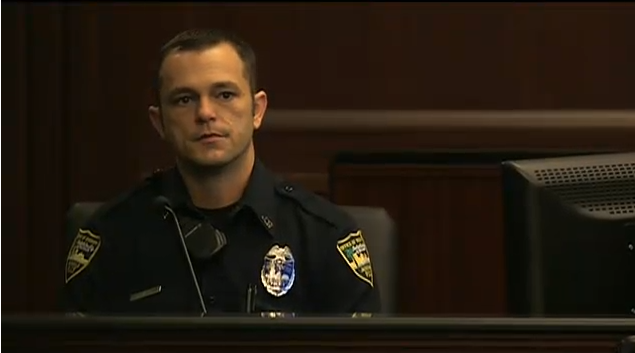

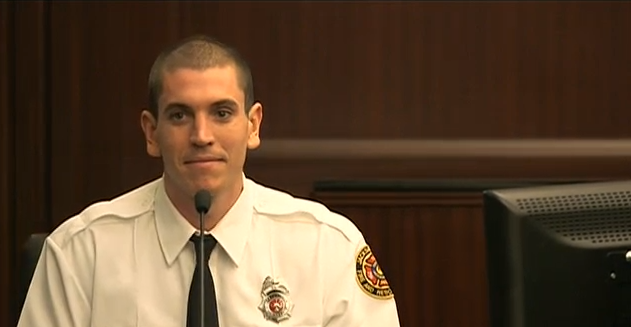
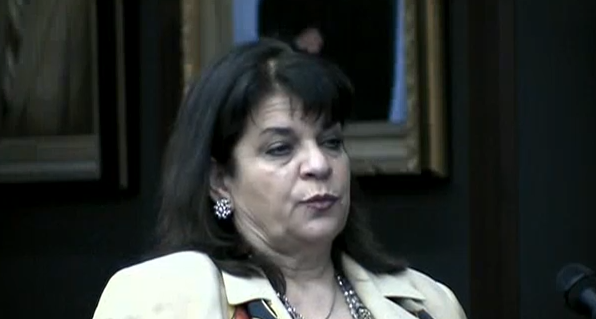
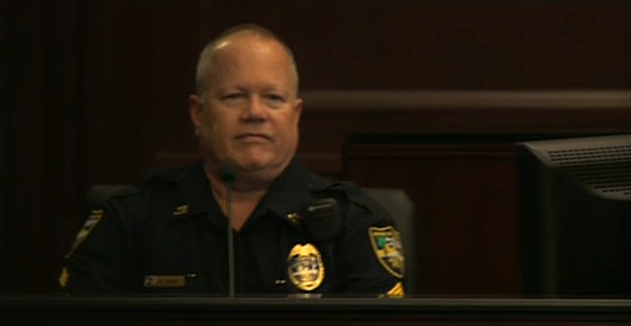
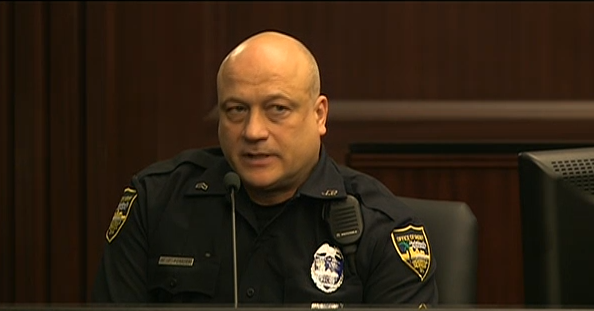
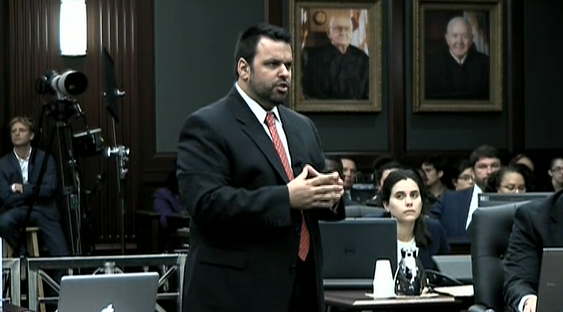

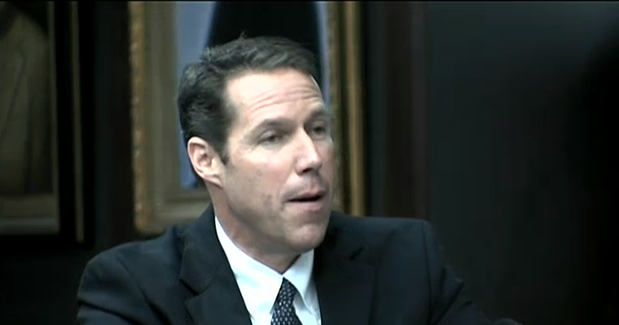
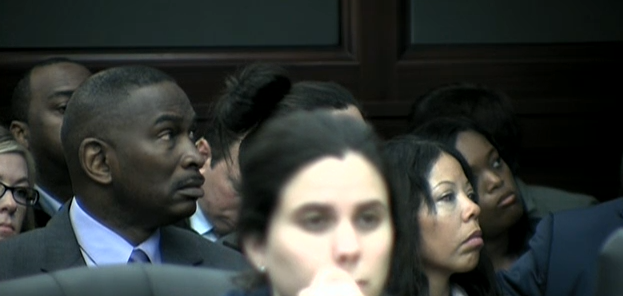
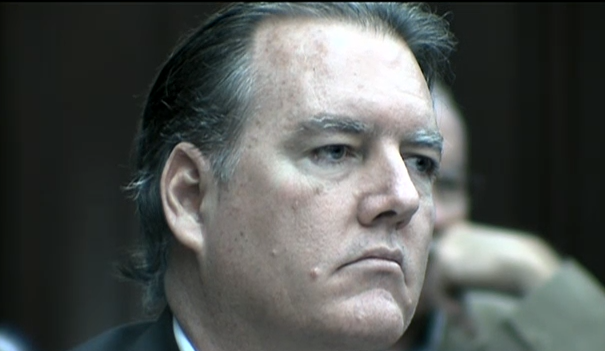



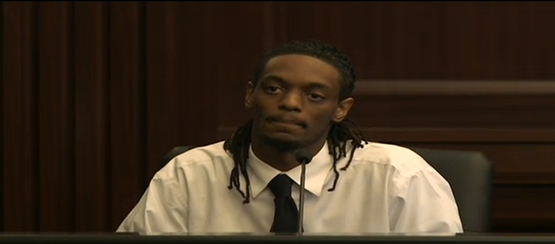
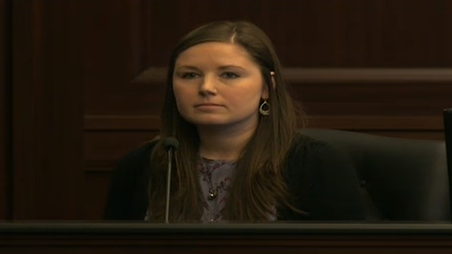
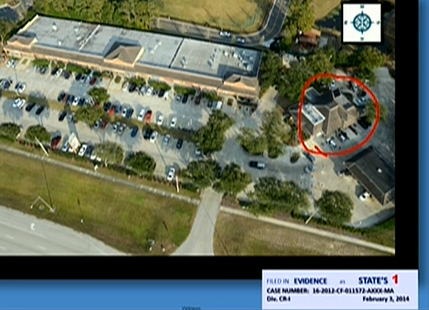
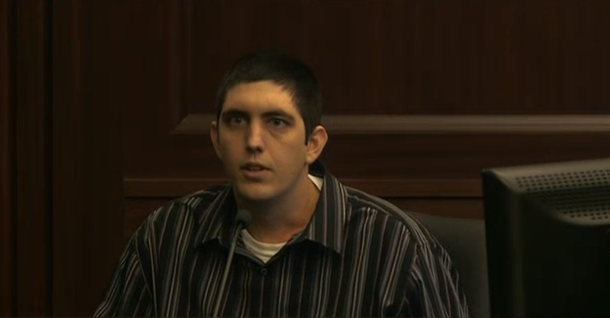








Comments
Andrew, as always thanks for your effort in reporting on these cases.
I have one question, up until your account above I have only heard that Dunn claimed the guys in the car had a “weapon”, you referenced a “shotgun” above. Is Dunn claiming he thought he saw a Shotgun?
“… or a stick, he wasn’t sure”, I think I read that he said.
pjm has it right. I believe the wording was to the effect of a shotgun or something like a shotgun, something like a stick.”
Even had they found such, the fire as the Durango was retreating would be difficult to justify.
But of course there was no shotgun or stick recovered, hence the “stashed the weapon” narrative.
–Andrew, @LawSelfDefense
So, assuming that even Strolla can’t argue that some kids saying ‘FU’ and playing loud music is grounds for shooting them, he’s going to HAVE to say ‘There was a gun, or something that looked like a gun, that Dunn saw and was sacred of’.
But no one but Dunn can bring that in as testimony, because no one but Dunn claims to have seen it, or anything like it.
Unless Strolla plans to try to argue it in closing argument only, with Dunn not taking the stand.
What about the letters / phone calls – can they come in without Dunn on the stand ? ‘Goes to state of mind’ etc ?
I don’t see how Dunn DOESN’T take the stand, at least to try to explain why he took off like a thief in the night, never called 911, never had a lawyer do it for him, and basically tried to disappear.
If the defense calls him on direct, is the state limited to cross, or can the state go after him on direct also ?
Hey, pjm, your “thumbs down” was an accidental press by me, sorry.
“What about the letters / phone calls – can they come in without Dunn on the stand ? ‘Goes to state of mind’ etc ?”
Yeah, they can come in as public records, they merely need the custodian of records to attest to their authenticity.
–Andrew, @LawSelfDefense
“Hey, pjm, your “thumbs down” was an accidental press by me, sorry.”
Poor trigger control ? 🙂
Or a subtle hint to Strolla – ‘ Tell Dunn to say he accidently pulled the trigger. Ten times.’
“Poor trigger control ? :-)”
Slow browser screen loading–I went to click on a spot that was one thing, except suddenly it became a different thing just as I clicked.
But I’ve fought poor trigger control all my life. Bane of all pistol shooters.
–Andrew, @LawSelfDefense
“If the defense calls him on direct, is the state limited to cross, or can the state go after him on direct also ?”
Technically the state would be limited to the scope of the defense’s direct, EXCEPT that one can always attack a witnesses credibility–and that’s a pretty wide door.
Non-technically, the state can always ask a lot of perfectly reasonable questions that both fall outside the scope of direct AND that the jury will reasonably believe OUGHT to be answered. The defense will object to every one, and the judge will sustain every objection.
But the jury will still be left wondering, well, why wouldn’t an innocent defendant have answered THAT one? How much of that the State can get away with is a function of the judge.
Regardless, were I the prosecutor, any day the defendant takes the stand is a very, very good day, indeed.
–Andrew, @LawSelfDefense
So – easy answer it would seem – the state calls him during their case. He either accepts (thus fair game on direct) or refuses (his right).
He can’t refuse to testify when they call him, and then take the stand only when Strolla calls him, right ?
Seems like a no-brainer that the state needs to call him before they rest their case, before Strolla starts his, no ?
“He can’t refuse to testify when they call him, and then take the stand only when Strolla calls him, right ?:
Sure he can. State will never call him, they’ll know that he’ll say no.
Any defendant would.
If a defendant is going to do the almost unimaginable and take the stand, they’ll do it at a time and place of their own choosing.
–Andrew, @LawSelfDefense
Wow. Never knew that. If the D calls him and asks ‘what did you have for breakfast this morning’ and nothing else, that’s all he can be cross-x’d about ?
He can refuse to testify today when the state calls him, and then ‘change his mind’ and take the stand tomorrow when the D calls him ?
I still don’t see how he DOESN’T tell the jury SOMETHING about his leaving, never calling any police anywhere, etc.
If I’m the state, I call him as my last witness anyway, just so the jury can hear him refuse to testify. And watch him change his mind when it’s HIS lawyer calling him later.
Unless of course I happen to have no freaking clue what I’m talking about, regardless of what hotel I stayed in last night.
“If I’m the state, I call him as my last witness anyway, just so the jury can hear him refuse to testify. And watch him change his mind when it’s HIS lawyer calling him later.”
And if the state tried that you can bet that Strolla would be on his feet objecting so loudly and vehemently that he could be heard. Before Dunn even realized the state tried to call him. Then before the judge could rule he would loudly move for a misttrial based on prosecutorial misconduct resulting in due prejudice.
At the very least he would get a rather lengthly sidebar, probably an adjournment and the the jury would be left with not only the impression that the prosecution tried to pull a fast one, but a really nasty fast one. This in a trial where the police and prosecution are already facing big innuendos of playing fast and loose. Lost witness reports, burned notes, selectively untaped interviews, selectively picking surveilance tapes.
At the worst the judge grants the motion. Most judges wouldn’t. Nelson certainly wouldn’t. But if Healy is a stickler for the rules and the 5th amendment, then he could grant it. Then Dunn goes free. End of story.
No one asked you, Mouse. Piss off.
His opinion’s as good as yours.
Sorry… couple of typos.
Should read — could hear three courts away.
and — undue prejudice
“If I’m the state, I call him as my last witness anyway, just so the jury can hear him refuse to testify. And watch him change his mind when it’s HIS lawyer calling him later.”
I forgot I don’t remember whether it is pretrial jury instructions or jury instructions or both the jury is told the defendant has the right not to testify and they are not to draw any inferences from it.
Many states (including mine) have Rules of Procedure that allow “wide open cross-examination.” You can ask the witness pretty much anything. Other states follow the Federal Rules which provide for “Limited Cross”, questions specifically directed to the testimony raised on direct. (With the exception of impeaching credibility, as Andrew explained)
Federal Rules of Criminal Procedure 611(b):
“(b) Scope of Cross-Examination. Cross-examination should not go beyond the subject matter of the direct examination and matters affecting the witness’s credibility. The court may allow inquiry into additional matters as if on direct examination.”
Florida apparently follows the Federal Rule.
It insures an end to questioning. On cross, you can ask about things asked in direct or impeachment. On redirect you can only ask about things asked in cross or impeachment. On recross you can only ask about things that were ask about in redirect. On reredirect …
It almost guarantees that there is an end since the pool of allowable questions get smaller.
What do you do if want to ask a question not in direct? Call the witness as your own. The thing is though that you cannot lead on direct ( most of the time ), you can on cross.
“If I’m the state, I call him as my last witness anyway, just so the jury can hear him refuse to testify. And watch him change his mind when it’s HIS lawyer calling him later.”
Doesn’t work that way, Any defendant has an absolute Constitutional right to not testify against himself. State can’t call him, can’t compel him to testify. Period.
Unless they extended him immunity. THEN they could compel him to testify. But what would be the point?
–Andrew, @LawSelfDefense
Nice little rabbit trail these guys started. Let me ask something that isn’t a rabbit trail and that is: how far can the prosecutor go on closing in arguing about the shooting at a retreating vehicle? Can she argue all the implications plus the lack of a present threat?
It seems to me that this guy would be a fool to let this go to the jury. Voluntary manslaughter would be a plea I would take, were I so stupid as to use my weapon the way he used his.
You can’t take the plea deal that’s not offered.
No reason for the State to offer a plea here.
Heck, they may well get him for murder 1, a huge prize for a prosecutor. It’s a stretch, but I know I could make a straight-faced case for it.
Murder 2 should be a walk.
If they can’t get at least MS, there’s someone broken on the jury.
–Andrew, @LawSelfDefense
In some states, you have a pre-trial conference and present witness lists, so there is no surprise at trial. Local rules of criminal procedure would prohibit calling a witness not on the list, unless a case could be made that justice required it, or something.
(This comment is in addition to Andrew’s explanation of Dunn’s CONSTITUTIONAL RIGHT not to testify.)
AFAIK you have you have rules in ALL states. It is part of a process called “discovery”. AFAIk there is no “expect when justice calls for it”. The only time you can call a witness not on the list is a rebuttal witness. If I testify that I went upstairs and paid my rent. You can call the landlady and ask her if I went upstairs and paid the rent, but you can only ask her about things that were already asked.
OK. Tks. I knew he could refuse to testify, no questions, ‘can not be compelled’,etc, but I didn’t know he could refuse today (to one side) then accept tomorrow (to his own side).
On the legal instructions side of things –
Does his leaving and driving far away and having to be hunted down come in ? I’d imagine it does, via detectives etc.
‘Why didn’t you talk to him on the scene, arrest him then ?’.
‘At that time, the shooter had left, we did not know who it was or where he was. A few days later, we located him several hours away, by means of someone wrote his plate number down.’
‘He never called you, or any police agency, to report that he had just fired a 9mm 10 times fast into an occupied vehicle at point blank range ?’.
‘No.’
‘During interrogation, did he say whay not ?’.
‘Yes, his girlfriend was worried about her dogs’.
etc etc.
Dunn is done, IMO.
I’m not sure I know what you mean by “legal instructions”.
If you mean “jury instructions,” then, yes, it could.
Both “consciousness of guilt” and “flight from scene” are recognized legal concepts in Florida, and there are jury instructions for both.
Either would be devastating. Both are more so.
But one won’t get very far trying to direct question detectives on why Dunn left the scene–how the hell would they know? It’s speculation.
You can observe that Dunn did in fact leave the scene, failed to self-report, and of course on closing you can suggest most anything (it’s not evidence, so relatively unconstrained), and leave it for the jury to decide.
–Andrew, @LawSelfDefense
“But one won’t get very far trying to direct question detectives on why Dunn left the scene–how the hell would they know? It’s speculation.”
Not ‘of their own’, but if there’s a conversation on record, say when they first knocked on his door pre-arrest, or in interrogation pre-arrest, that all comes in, right ?
In fact, can’t his whole taped interview at PD-HQ pre-arrest come in ?
Based on his letters / phone calls, he seems quite the chatty fellow. I’ve even seen at least part of his police interview video somewhere.
“In fact, can’t his whole taped interview at PD-HQ pre-arrest come in ?”
Yes, that can all come in.
–Andrew, @LawSelfDefense
Well after Zimmerman, I’m sure they are leary of showing the video of his interview. One burned, twice shy.
But I don’t think they can introduce some of the interview and keep out his gun or stick statement. ( Actually IIRC the exact statement was more along the lines of:
Dunn: He pointed a shotgun at me.
Detective: What if I told you we didn’t find a gun?
Dunn: No?
Detective: No.
Dunn: What about a stick or something that looks like a gun?
Detective: No.
Dunn: ( very mild dismay ).
Andrew – Great summaries and good selection of pictures. (I guess if Wolfson is the Abbie Carmichael of the prosecution office then Corey would be a bad looking Adam Schiff in drag with too much makeup and questionable fashion sense.)
Today’s Wolfson outfit was a horror. But tomorrow’s Saturday, so there’s hope for something less “Corey”.
–Andrew, @LawSelfDefense
Yeah, that outfit with that collar reminded me a bit of an English domestic back before the war. Heavy on the starch. She looked much better yesterday.
Wolfson has been a fount of quite competence, unlike others in that office.
However her outfit today was just horrid. It’s like she tried to dress both sexy and conservative at the same time and failedc at both.
That reminds me. Today we found out the name of that pretty brunette tech/paralegal at the prosecution table. Guy called her by her name during Ms. LeBlancs testimony. Gotta download it now and find out who she is. And yes I am as the Moody Blues say, a very lonely man.
Another good job, Andrew – thanks.
It’s going to be hard for Dunn to convince anyone of self-defense in this one, I think.
I figured Corey must have thought it was a slam dunk or she would never have shown her face in the courtroom.
I think this guy’s only chance is to argue that the violent themes of the rap music had a strong suggestive effect on him.
Any word on what song was playing?
Detective: “What if I told you….”
Cops are allowed to lie to the suspect. As in, your buddy just rolled on you.
And “What if I told you….” isn’t even a statement, so whether the implication is true isn’t relevant.
Theoretically, even if a shotgun were found, the detective could say that. Not sure to what end, presuming justice is the goal, but the suspect’s reaction might be useful, or not, presumingjustice is the goal
I didn’t say they can’t. Anyone who watched the Zimmerman trial and the cops telling George about the cell phone video would be an idiot to say so. The only point I made was that Dunn did not say “gun or stick”. Dunn said gun. The cop said “no gun”. THEN Dun said “was there a stick that looks like a gun”. Some people say that it is significant that Dunn said “gun or stick”, but if it is significant, then it’s also significant that Dunn said “gun” and then said “stick” after he was told there was no gun.
“Thompson described seeing Dunn’s gun, and testified that Dunn said, “Are you talking to me?” speaking to Jordan. Thompson told Storns, now back from the store, to get them out of there. That’s when Dunn started firing, into Davis’ door (presumably the first burst of three rounds.”
Andrew, can you square this with the pre-trial commentary here that inferred that Dunn returned to his vehicle to retrieve his weapon? Thompson’s testimony leads me to believe that Dunn had the pistol on him at the time Dunn initiated the confrontation. In other words, Dunn did not retreat to a position of safety. (This would be a plus for his defense.)
It appears that Dunn never left the driver’s seat of his car. The exact location from where the pistol was retrieved seems vague to me–I suspect there may be an assumption by witnesses that the gun was in the glove compartment–except it seems clear the gun was not being carried on Dunn’s person. Maybe a between-the-seats console?
Assuming Dunn had perceived a threat in the form of a shotgun, he was never in a position of safety from which he “returned to the fight.”
But that’s a technicality. There’s so much more wrong with his self-defense claim that it’s fairly wobbling around the court room.
–Andrew, @LawSelfDefense
Not impressed with Strolla so far. Should Dunn lose this trial and appeal his verdict it’s almost a sure bet he’s going to want a different lawyer. As for the trial so far, I’m more and more of the opinion that Davis and Dunn got in an argument and Dunn (really) lost his temper which resulted in Dunn shooting at Davis and his friends. Strolla is going to have to pull off some really amazing defense today to change that perception!
“Should Dunn lose this trial and appeal his verdict it’s almost a sure bet he’s going to want a different lawyer.”
That would be the norm for any defendant and any trial lawyer.
Appellate counsel is almost always different than trial counsel.
For one thing, they’re quite different skill sets.
For another, on appeal you always want the option–how in vain it may be–to argue ineffective assistance of trial counsel. That’s hard to do with a straight face if you’ve chosen to retain your trial counsel to represent you on appeal
–Andrew, @LawSelfDefense
Ah, thank you, I was not aware of that.
FYI, we’ll be starting up our live video stream and live-tweeting again at 9AM, or as soon thereafter as the Court comes into session.
The moment Court starts up I’ll post here on Legal Insurrection our Live Coverage Day Three post. Keep your eyes open for it. 🙂
Also, I can’t remember if I’ve mentioned it here, but I’ve begun doing a “Law of Self Defense: Question of the Week” column for Ammoland.com. Each week I pick one question from those submitted and answer in the column. Person who submitted the chosen question wins either a copy of “The Law of Self Defense, 2nd Edition,” or a snazzy LOSD ball cap, their choice.
Next week’s column will be written tomorrow, so if interested get your questions in today. 🙂
–Andrew, @LawSelfDefense